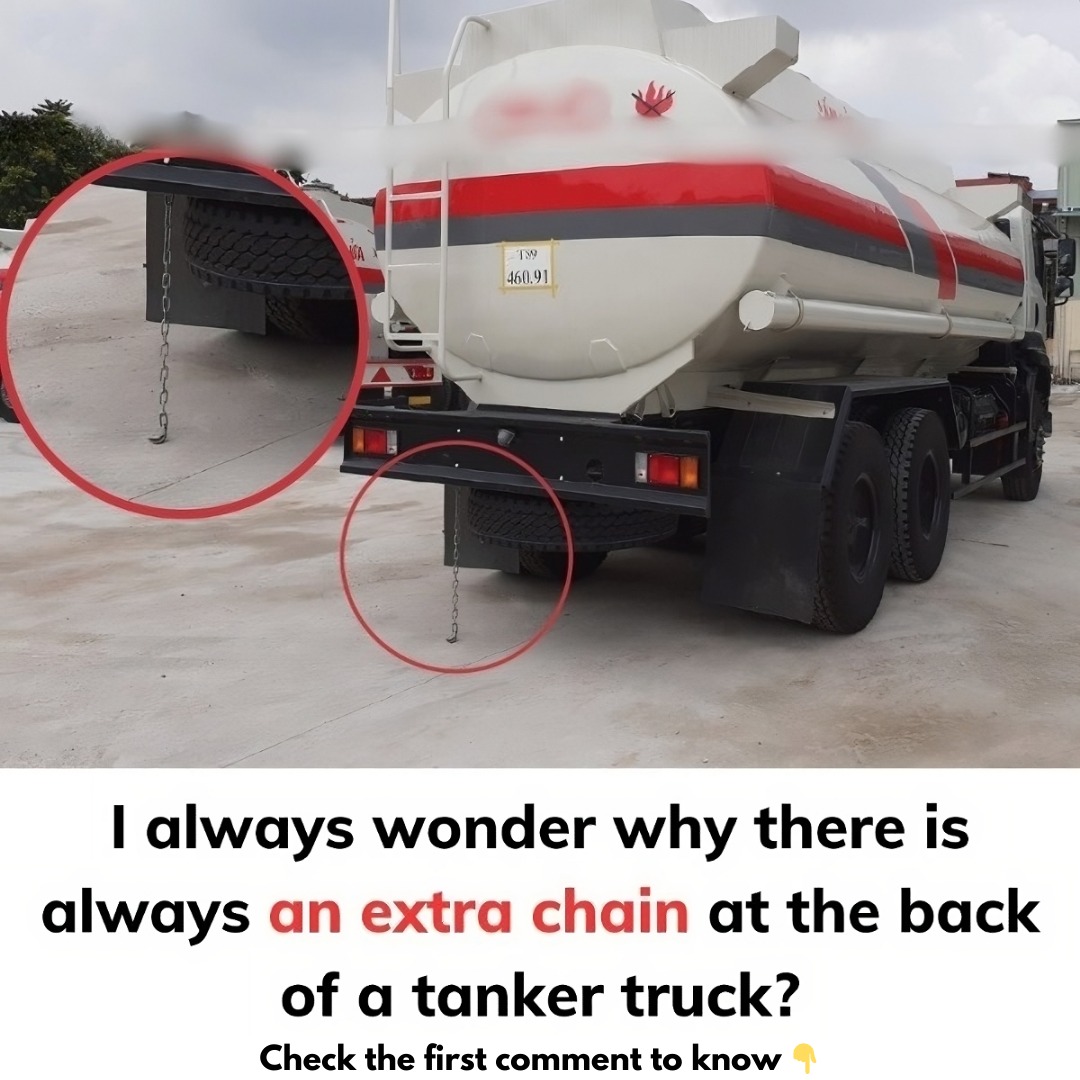Have you ever noticed an extra chain hanging from the back of a tanker truck and wondered what it’s for? It’s not there for decoration or as a backup hitch; it’s actually a crucial safety feature. This chain plays a vital role in preventing fires caused by static electricity. In this article, we’ll dive into why tanker trucks need this extra chain, how it works, and why it’s essential for safely transporting flammable liquids.

Understanding Static Electricity in Tanker Trucks
Tanker trucks carry highly flammable liquids like gasoline and oil. When these trucks are on the move, they create static electricity due to the interaction between the liquid, air, and metal inside the tank. But how exactly does this build-up of static electricity occur?
1. How Static Electricity Builds Up Inside Tankers:
- Movement of Liquids: As the fuel or oil sloshes around inside the tank, friction is created. This movement generates static charges on the tank’s surface.
- Air Friction: At the same time, air inside the tank rubs against the tank walls, adding to the charge build-up.
- Charge Imbalance: Together, these factors lead to an accumulation of static electricity on the tanker’s exterior.
While static electricity may seem harmless, it can be extremely dangerous when it comes into contact with flammable substances like gasoline or oil.
The Danger of Static Electricity in Tankers
Static electricity isn’t just a small annoyance—it’s a serious hazard, especially when transporting flammable liquids. Here’s why:
1. Risk of Fire and Explosion:
- Potential for Sparks: Static electricity can discharge as sparks, which are particularly hazardous around flammable vapors.
- Fire Hazard: In an environment filled with fumes, even a tiny spark can ignite a fire or cause an explosion.
- Safety Measures: Managing static electricity is essential to ensure the safe transportation of flammable substances.
How the Extra Chain Helps Neutralize Static Electricity
So, how does the extra chain help prevent these potential disasters? The chain provides a direct path for static charges to move safely to the ground, effectively neutralizing the build-up of static electricity.
1. Conductivity and Grounding:
- High Conductivity: The chain, usually made of metal, is highly conductive, making it ideal for transferring electric charges.
- Continuous Discharge: As the tanker moves, the chain drags along the ground, allowing static charges to flow directly into the earth, a process known as grounding or earthing.
- Neutralization: This grounding prevents the build-up of static charges, ensuring that they don’t reach dangerous levels.
By continuously discharging static electricity, the chain helps maintain the tanker’s electrical neutrality, significantly reducing the risk of fire.
The Role of the Road Tanker Grounding System (RTR)
The extra chain isn’t the only safety feature designed to manage static electricity. Modern tanker trucks are also equipped with advanced Road Tanker Grounding (RTR) systems, which work in tandem with the chain to enhance safety, particularly during fuel transfers.
1. How RTR Works During Fuel Transfer:
- Connecting Cables: During fuel loading or unloading, grounding cables are connected between the tanker and the fuel source to ensure a continuous path for static discharge.
- Real-Time Monitoring: RTR systems often come with sensors that monitor the grounding connection, providing additional safety.
- Preventing Sparks: By maintaining constant grounding, the RTR system ensures that static charges generated during fuel transfer are safely neutralized.
This system provides an extra layer of protection when static electricity risks are highest, like during fuel loading or unloading.
Why Chains and Grounding Systems Are Critical for Safety
Both the chain and RTR system aim to eliminate static electricity, but they serve different purposes.
1. Static Management On the Move vs. Stationary Grounding:
- The Chain: Works while the tanker is moving, continuously discharging static charges that build up during transit.
- The RTR System: Operates during stationary periods, such as fuel loading or unloading, offering real-time monitoring and grounding.
Together, these safety measures create a comprehensive system to reduce the risk of fire and explosion.
A Simple Solution to a Complex Problem
The use of a grounding chain may seem old-fashioned, but it’s a simple, cost-effective, and still highly relevant safety measure. By dragging along the ground, the chain ensures that static charges are continuously discharged, preventing them from accumulating to dangerous levels. Combined with modern RTR systems, this approach offers reliable protection against potential fires.
Conclusion: The Importance of Tanker Safety Measures
The spare chain at the back of a tanker truck is more than just a detail—it’s a crucial safety feature that prevents static electricity build-up. By grounding excess charges as the truck moves, the chain helps avoid dangerous sparks that could lead to fires or explosions. When combined with advanced grounding systems during fuel transfers, these measures create a safer environment for transporting flammable liquids. So, the next time you see a chain trailing behind a tanker truck, you’ll know it’s there for a good reason—keeping the road, the driver, and everyone nearby safe.





